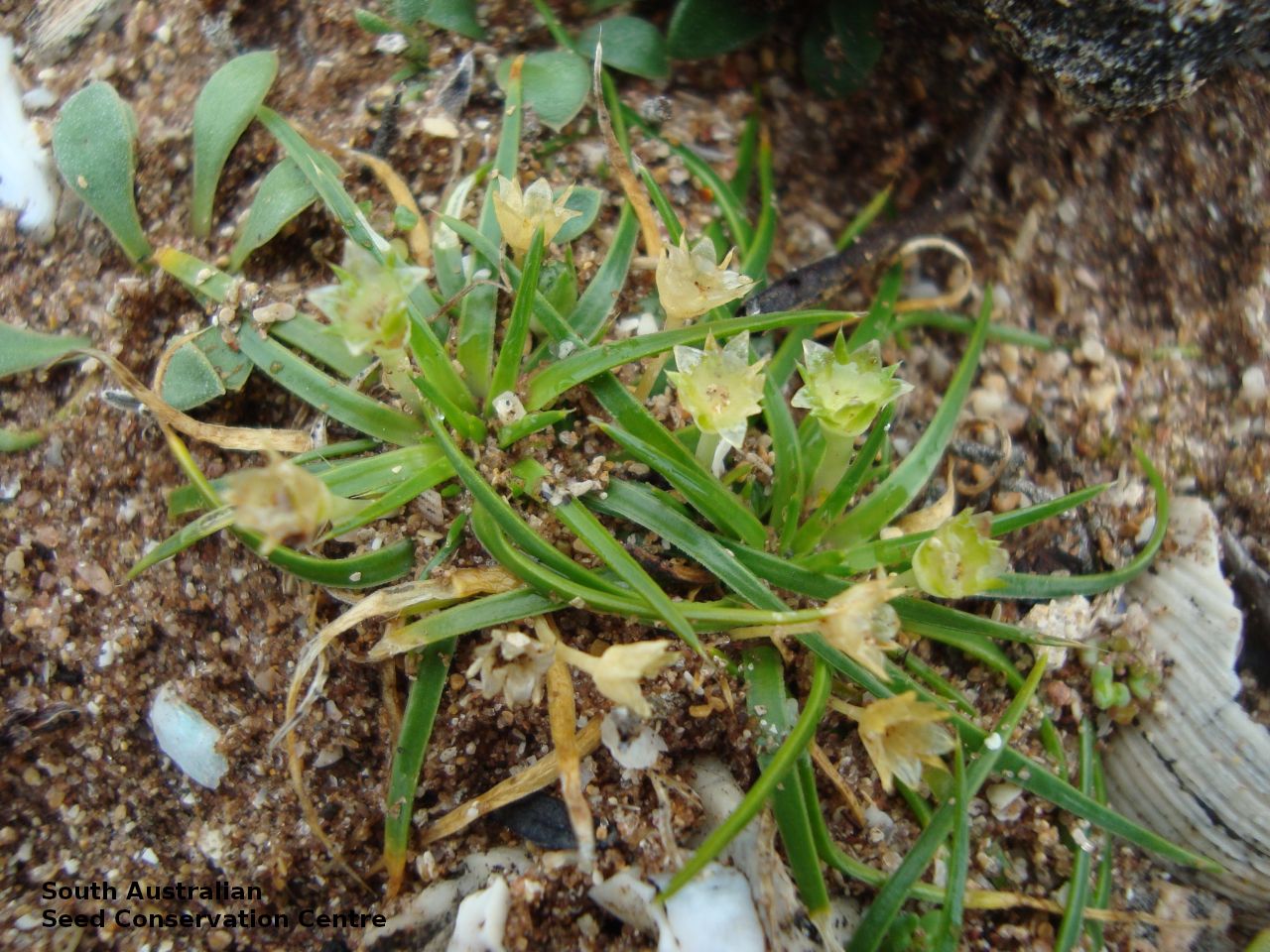
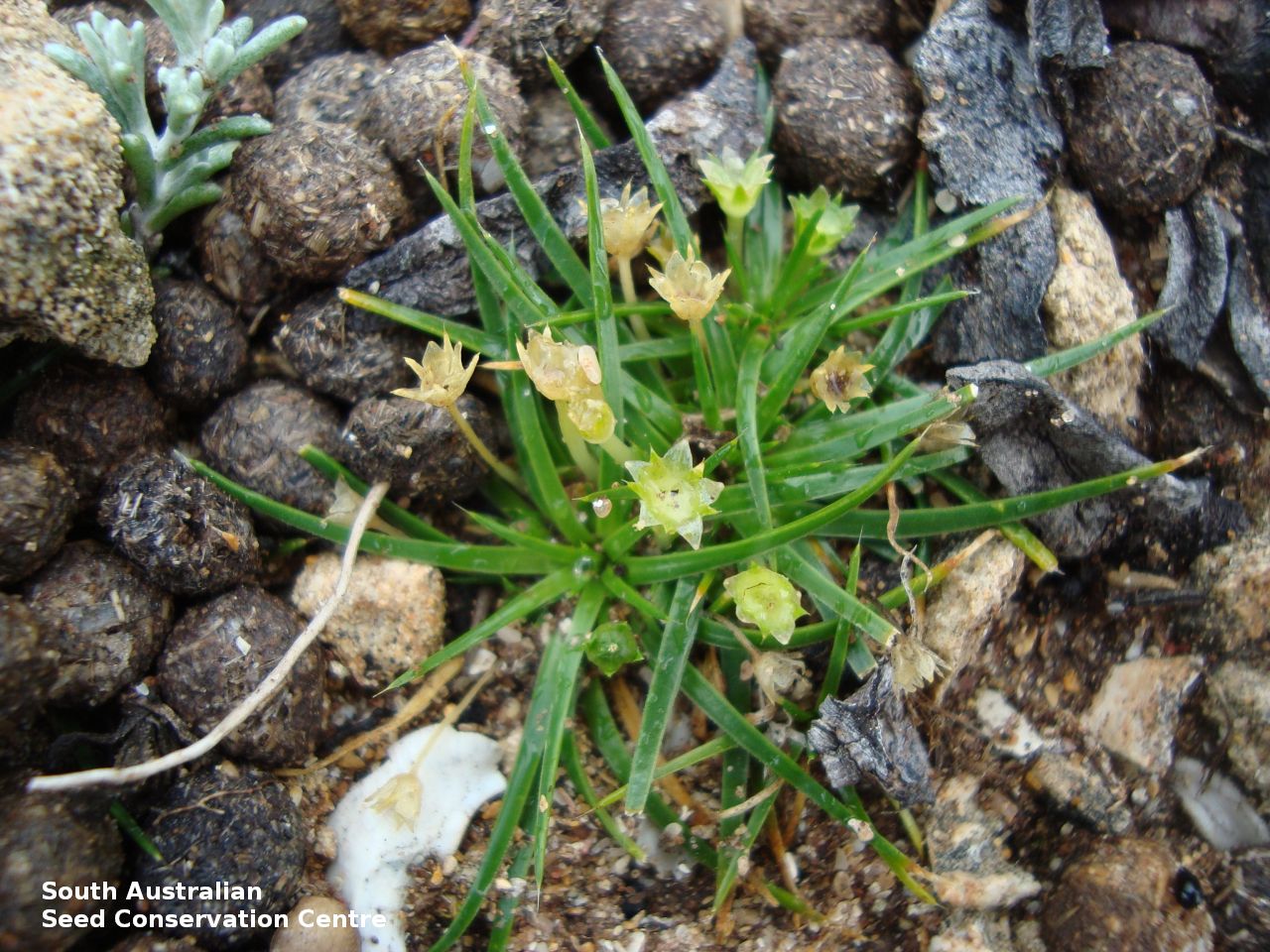
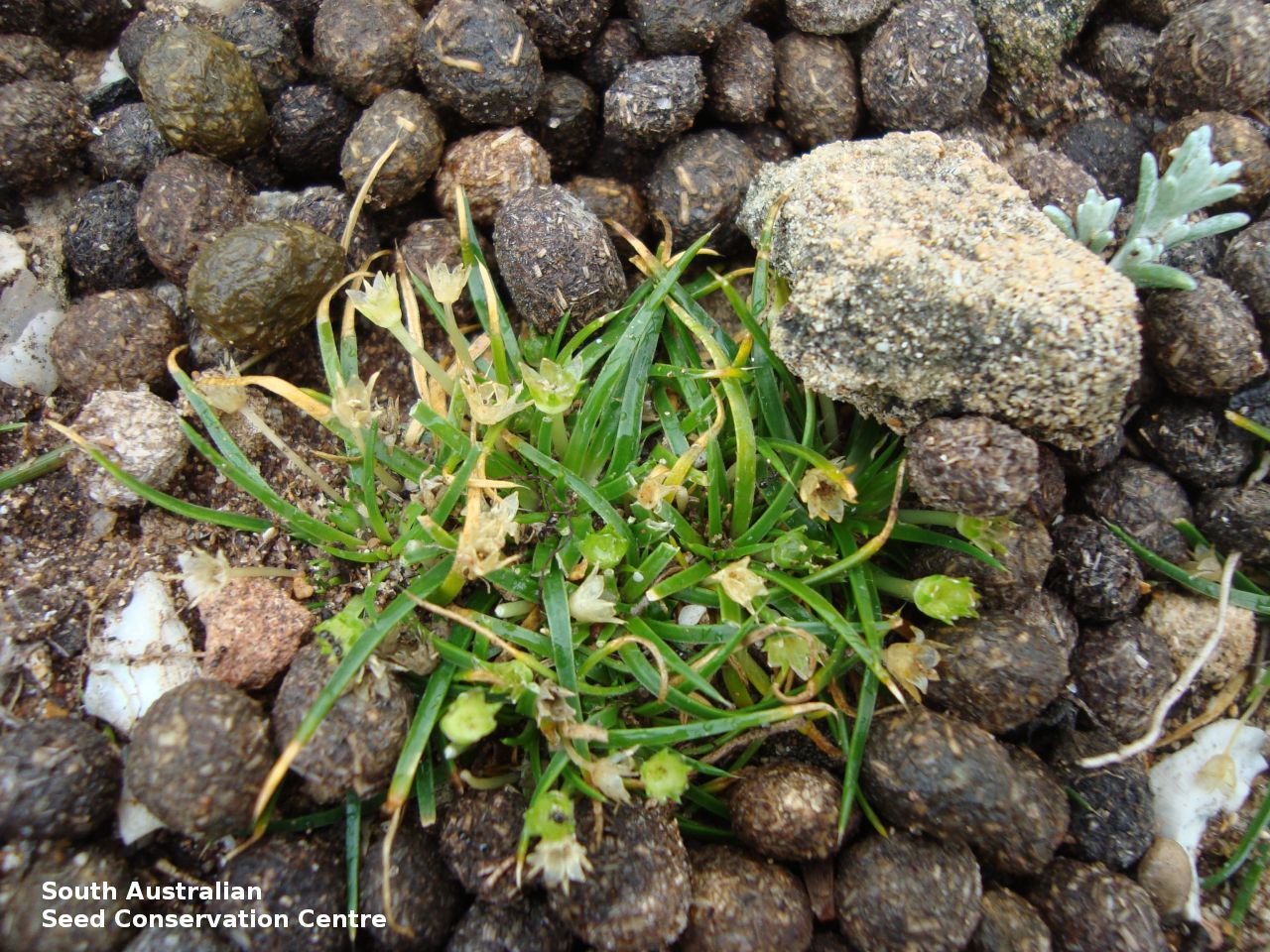
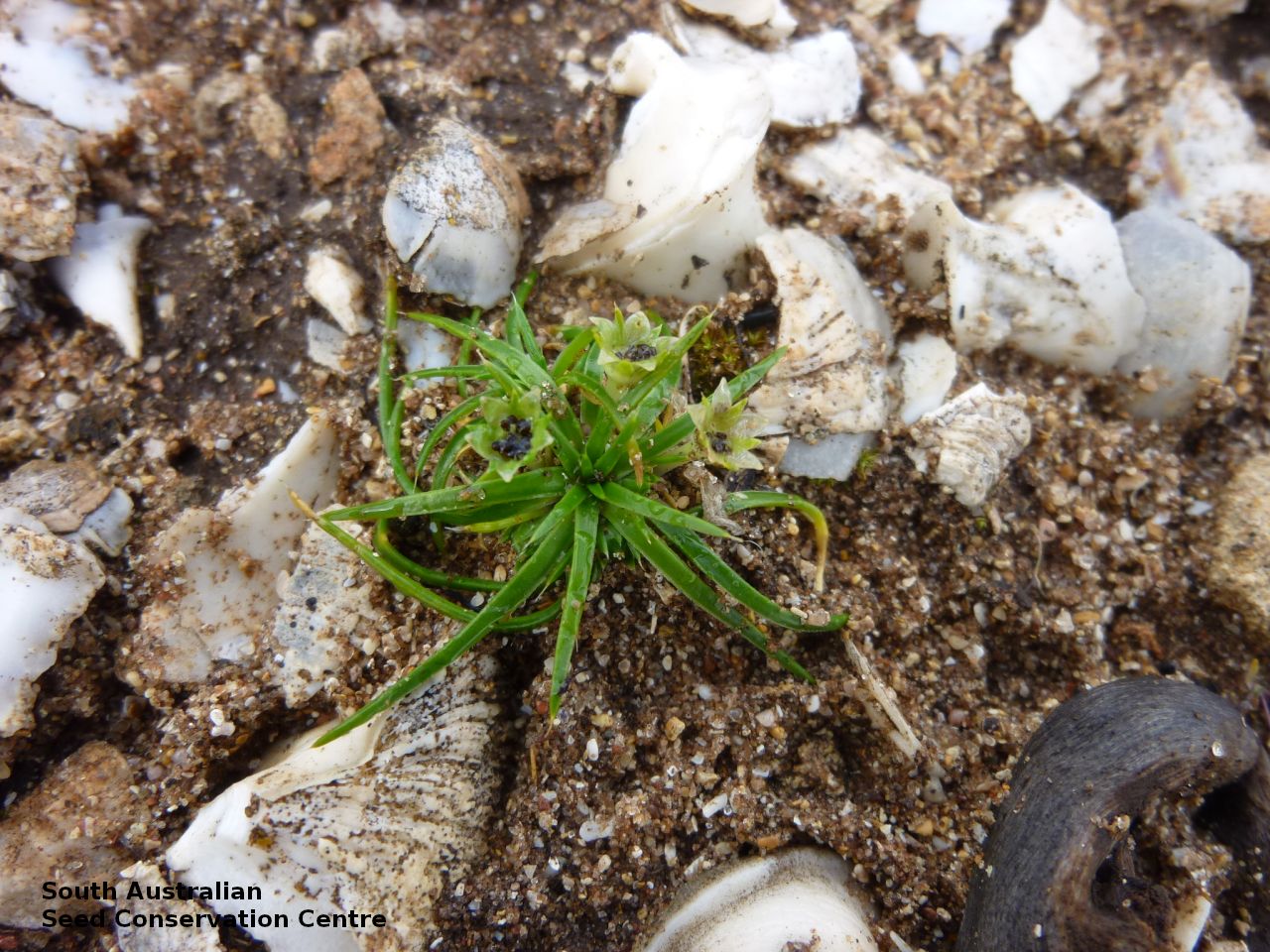
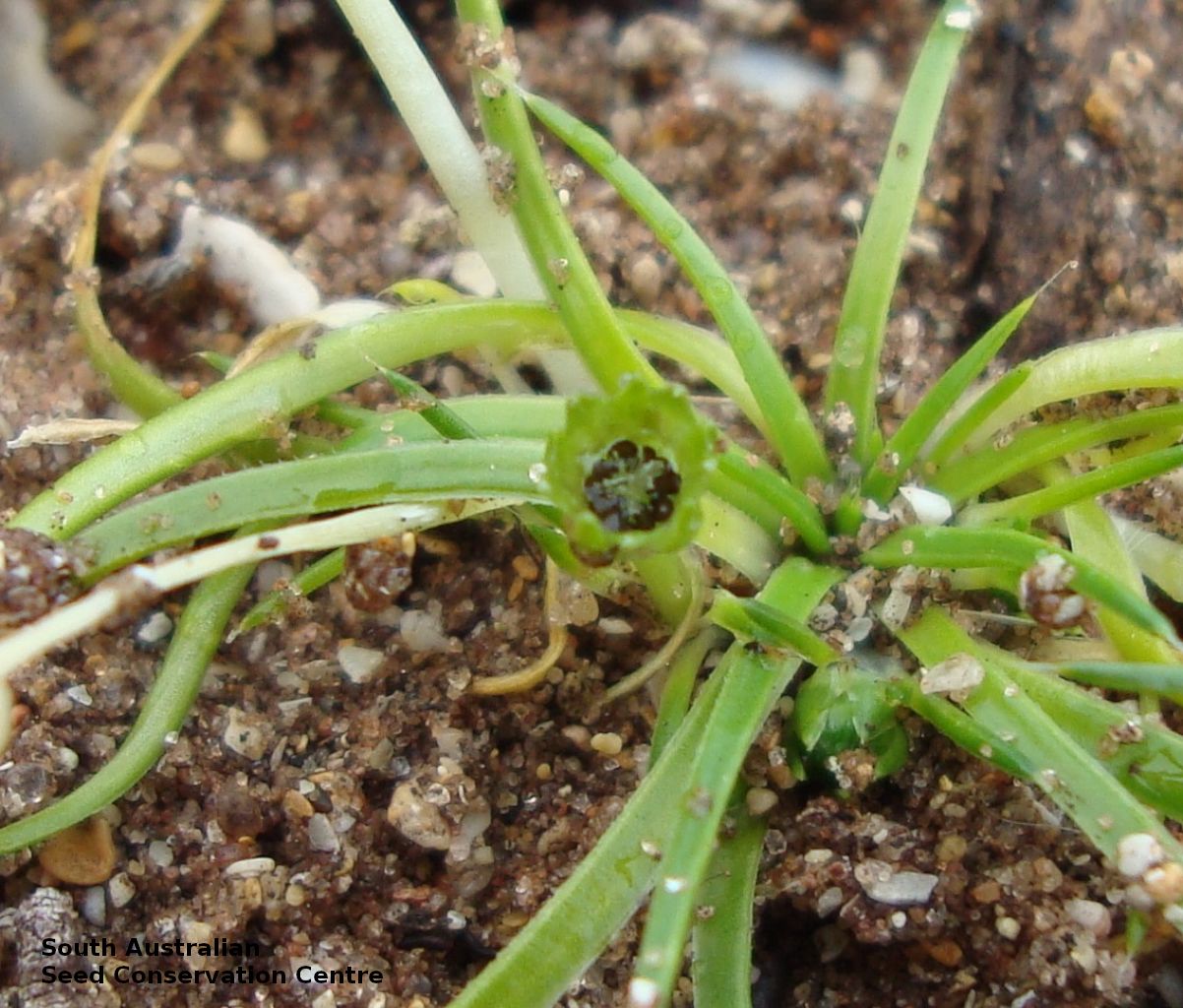
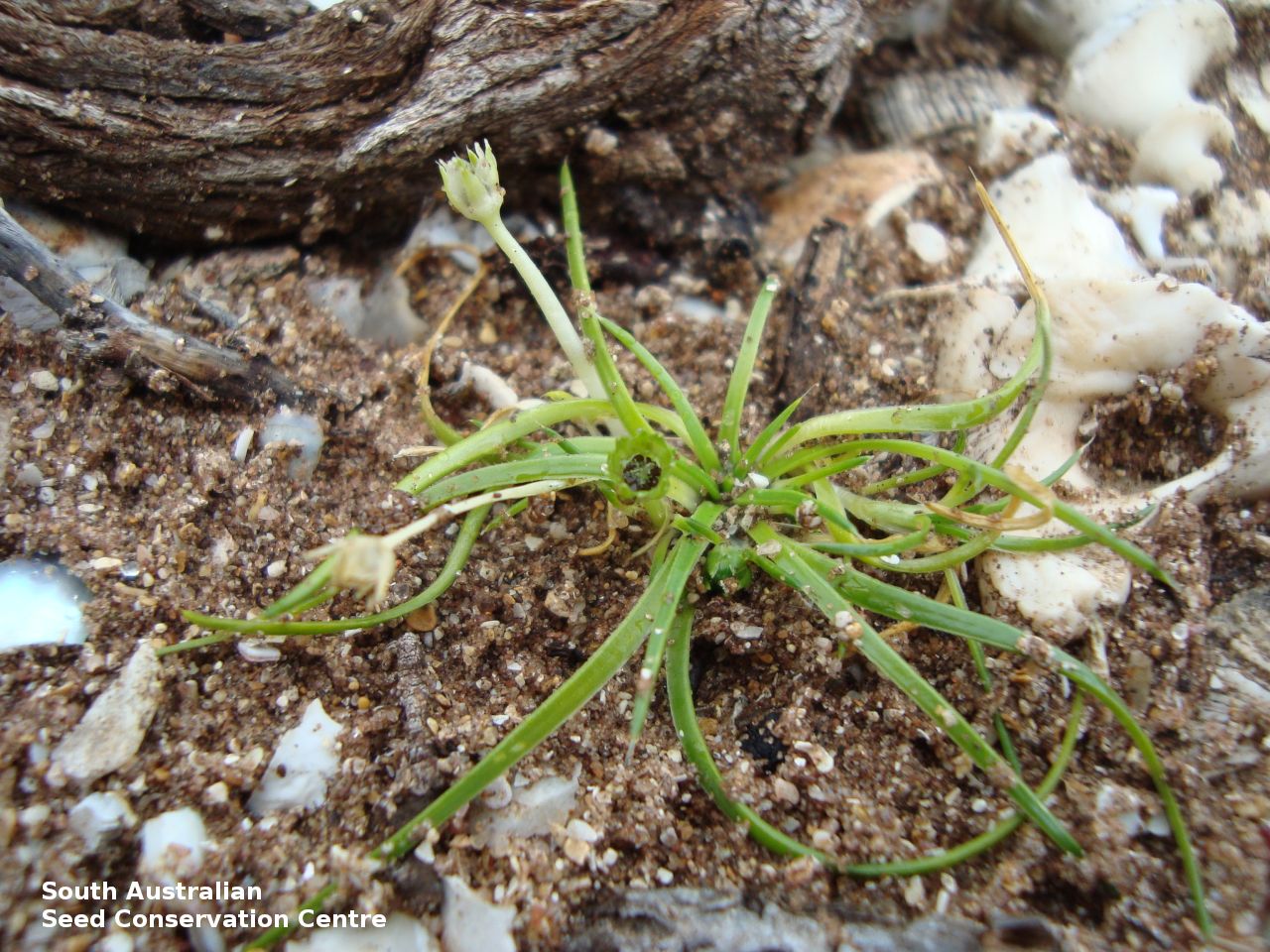
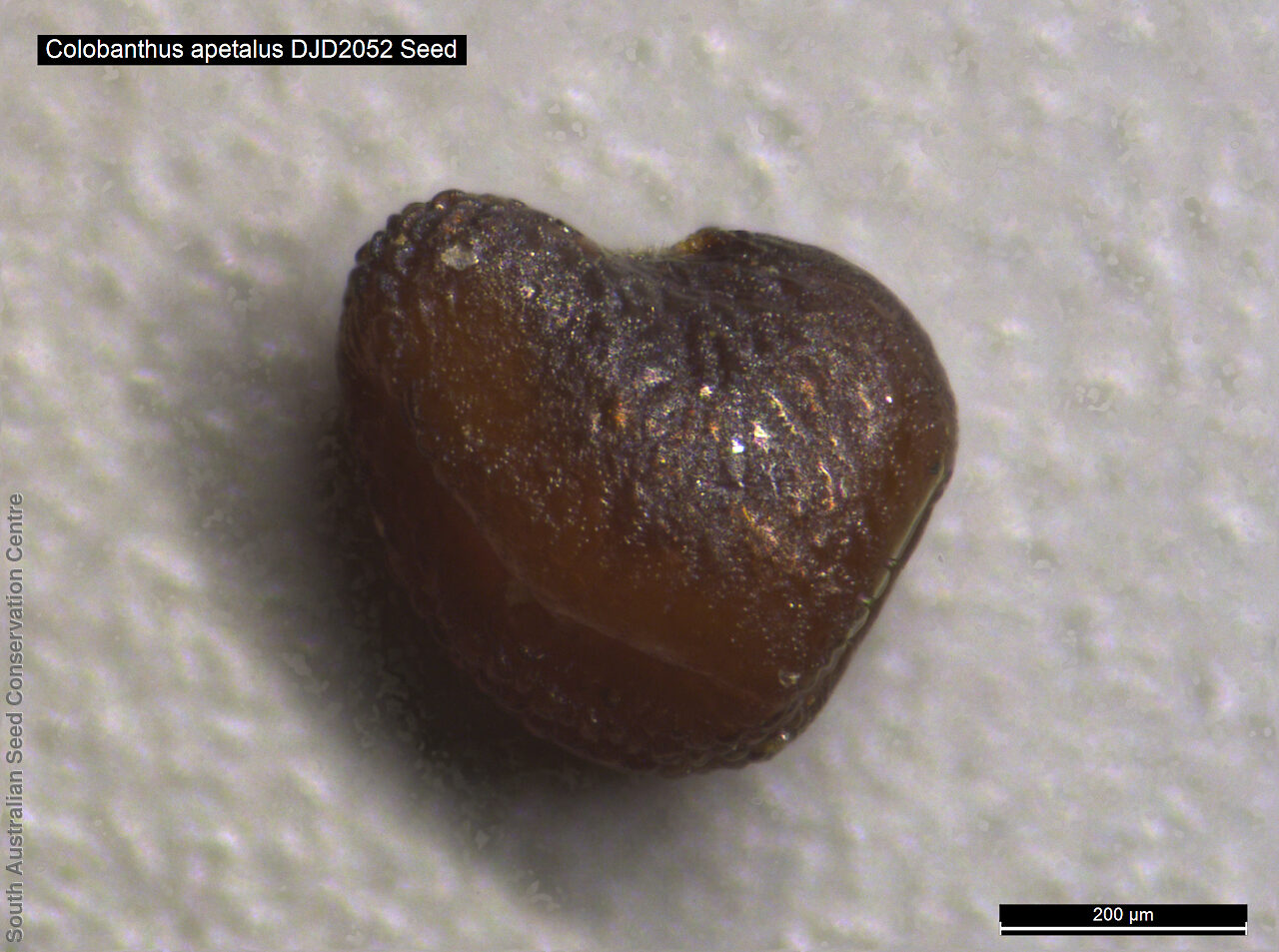
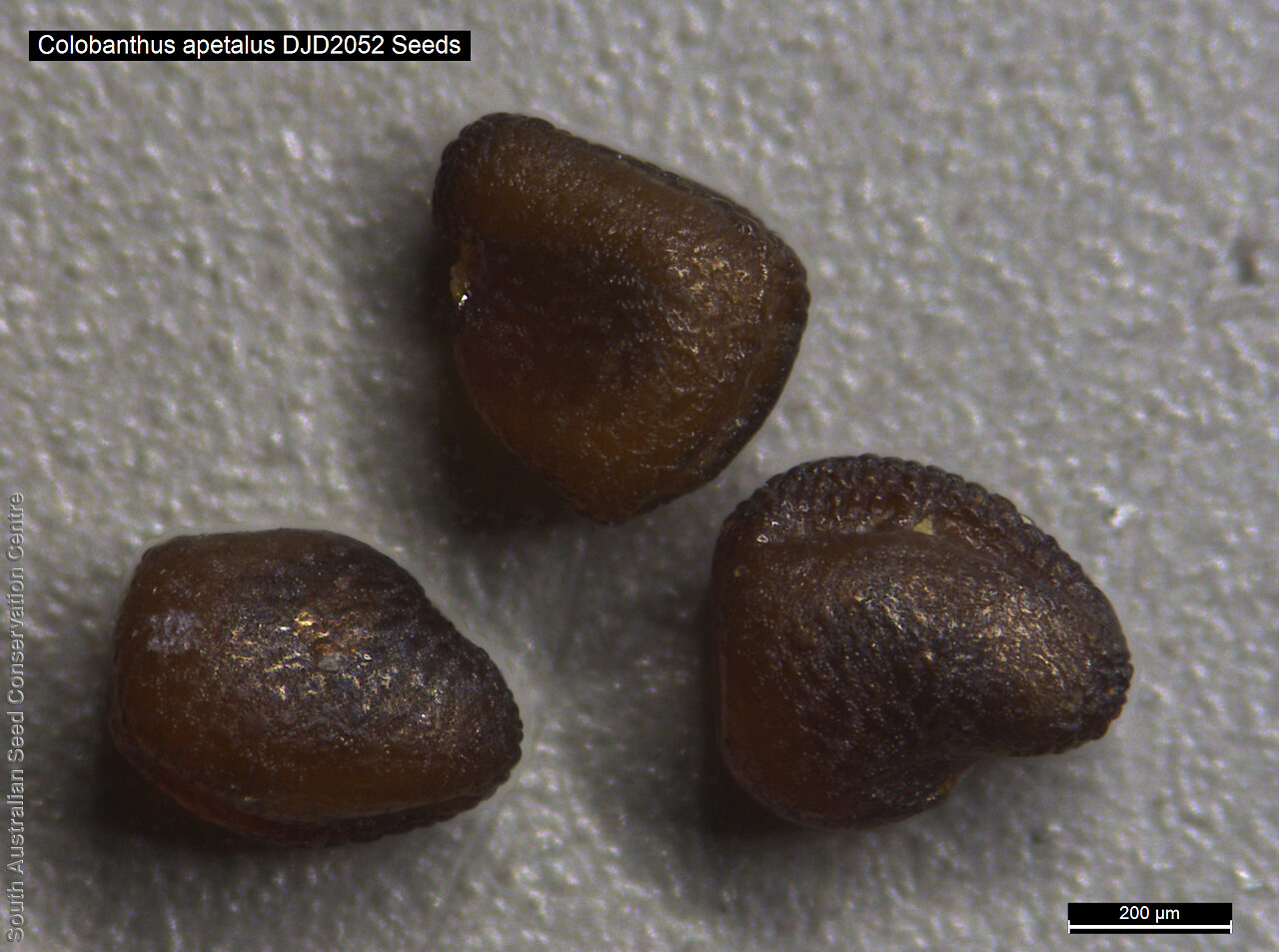
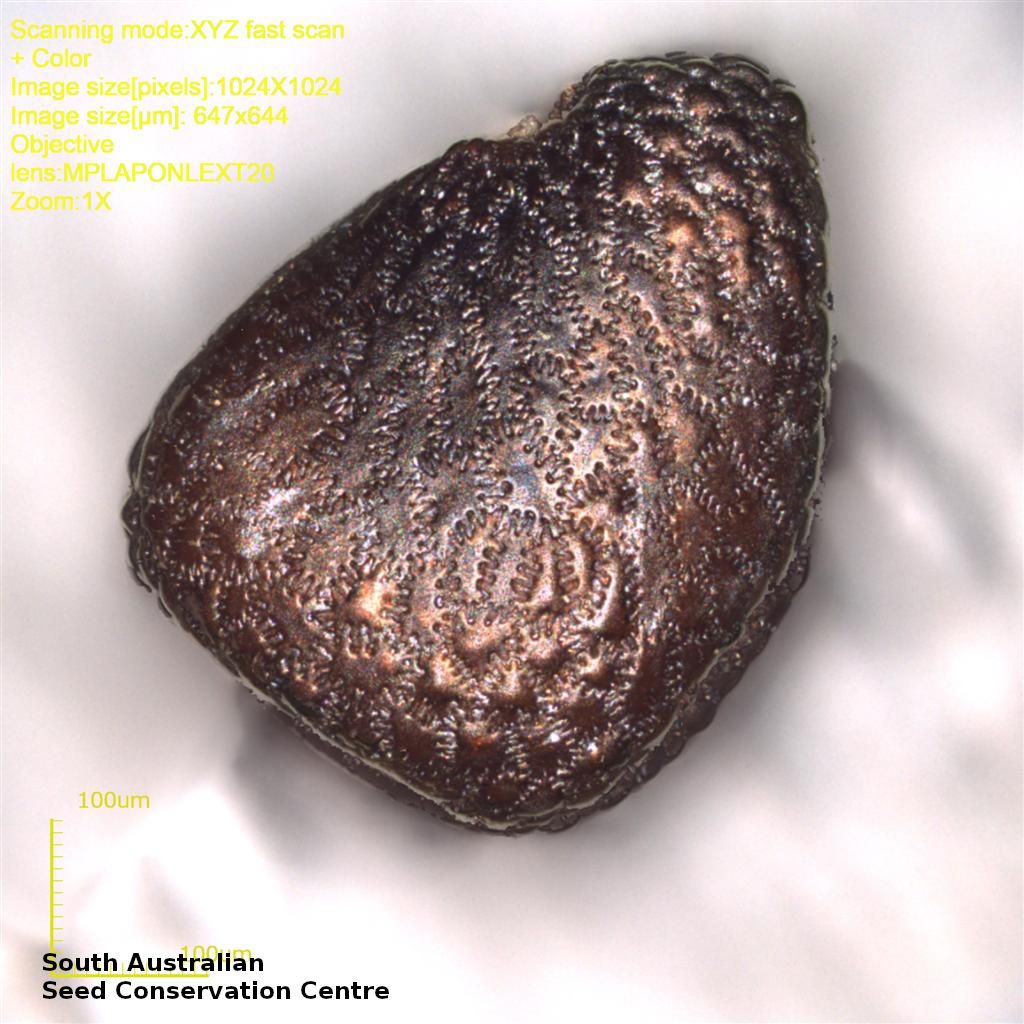
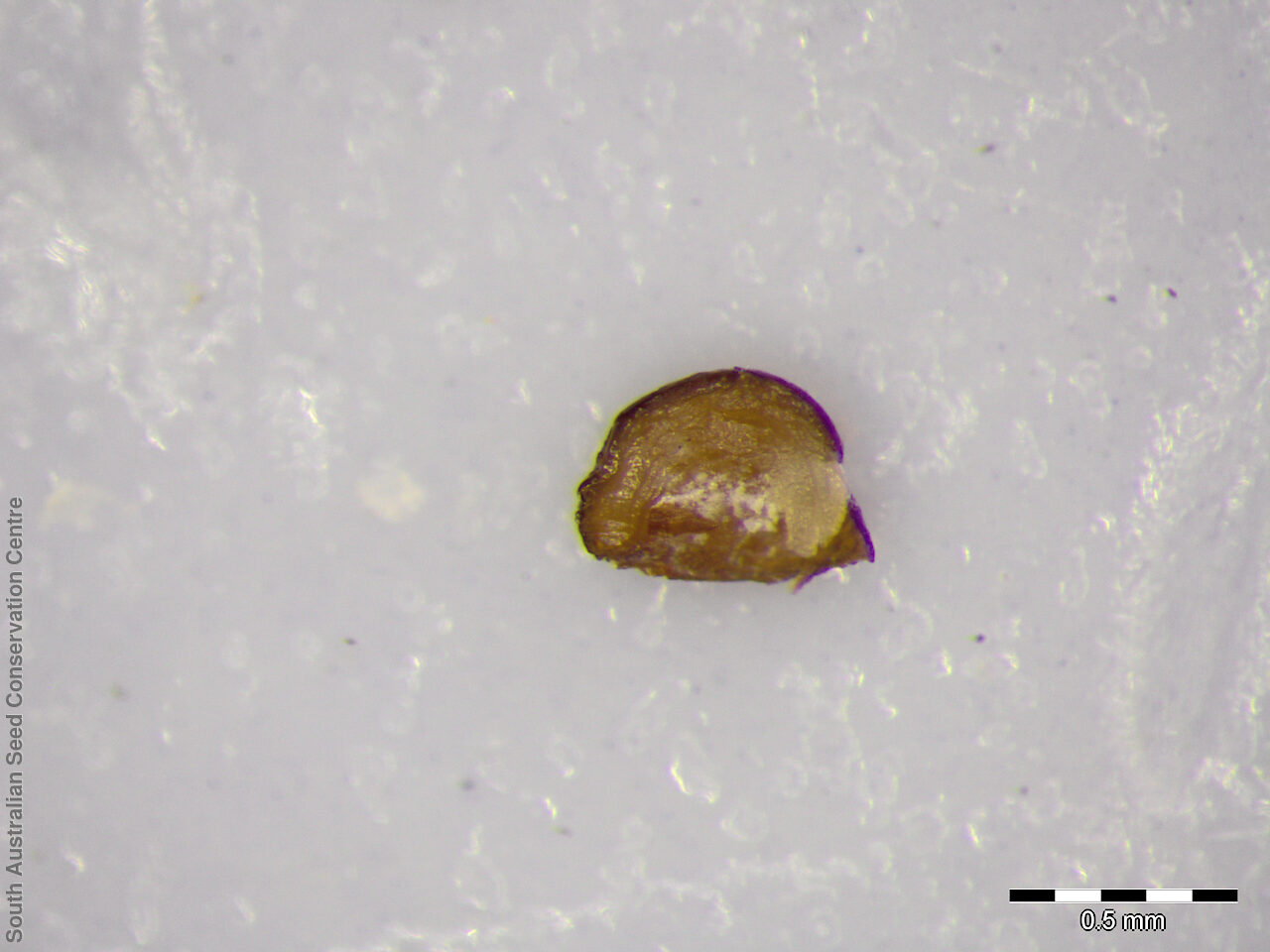
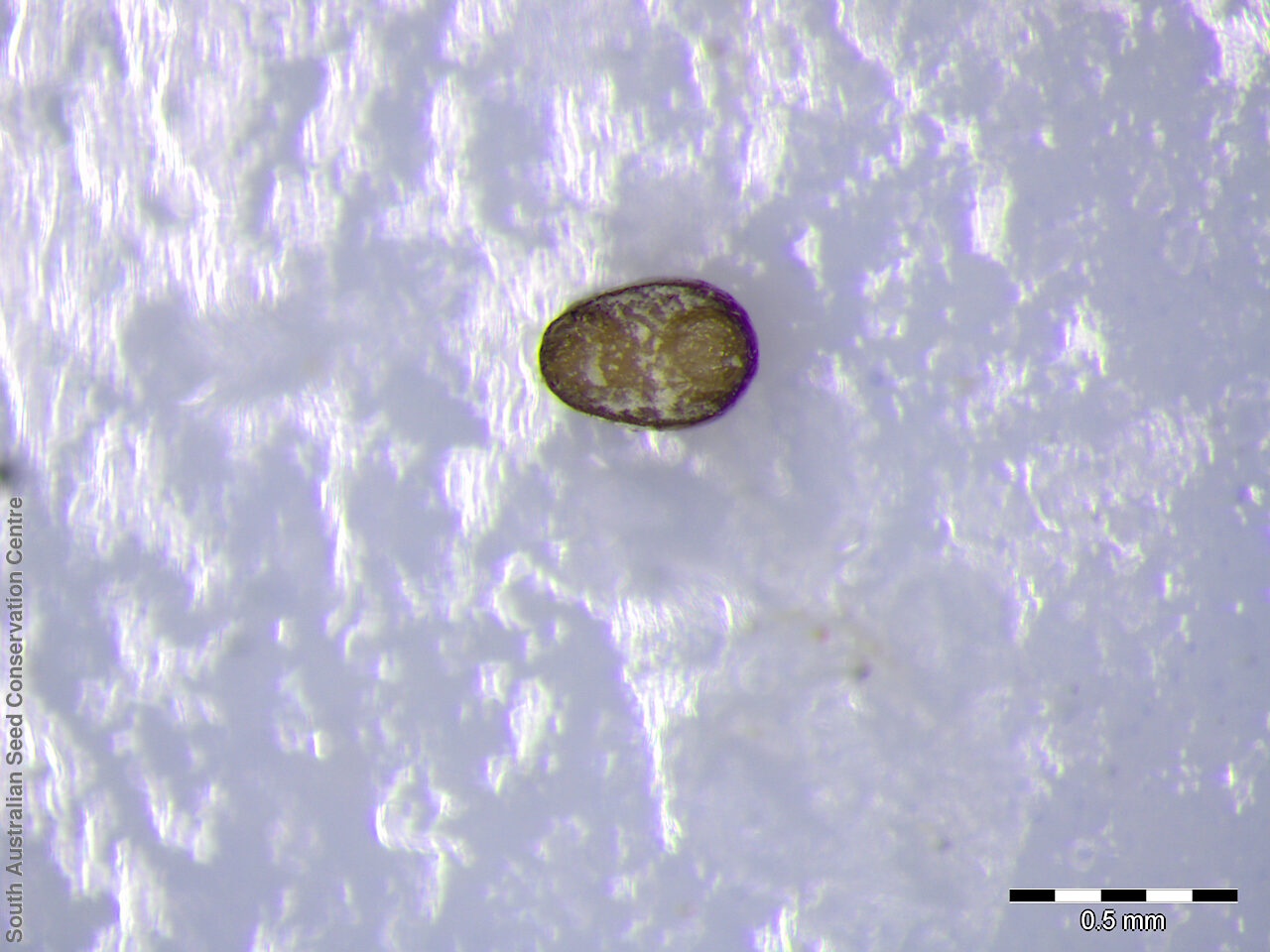


Botanical art
Prior names
Spergula apetala
Etymology
Colobanthus from the Greek 'kolobos' meaning stunted and 'anthos' meaning flower, referring to the flower wth no petals. Apetalus from Latin meaning without petals.
Distribution and status
Very few records from South Australia and recorded only from the lower South-east growing along the coast, usually on sheltered dune slopes and in dune swales. Also found in New South Wales, Victoria and Tasmania. Native. Very rare in South Australia. Rare in New South Wales and Victoria. Common in Tasmania.
Herbarium region: South Eastern
NRM region: South East
AVH map: SA distribution map (external link)
Plant description
Tiny annual sedge-like herb, almost stemless densely tufted herb to 5 cm high. Leaves linear-subulate, concave towards the base, sheathing at the base; attenuated into a long point, to 3 cm long and 1 mm wide, with flattened to rounded, sometimes obscure midrib. Flower-head glabrous, erect, growing from the centre of the leaf-tufts, mostly longer than the leaves, slightly thickened just under the calyx; flower single, terminal with sepals triangular-acute. Flowering between November and February. Fruits are small capsule slightly longer than the sepals, opening by 5 valves. Seeds are brown slightly reniform seed to 0.5 mm across. Seed embryo type is peripheral.
Seed collection and propagation
Collect seeds between November and March. Collect capsules that are maturing, fat and turning brown and contain hard brown seeds. Place the capsules in a tray and leave to dry for two weeks. Then rub the capsules gently by hand or with a rubber bung to dislodge the seeds. Use a sieve to separate the unwanted material. Be very careful as the seeds are very small. Seeds should be hard and brown. Store the seeds with a desiccant such as dried silica beads or dry rice, in an air tight container in a cool and dry place. From one collection, the seed viability was high, at 100%.
| Location | No. of seeds (weight grams) | Number of plants | Date collected | Collection number Collection location | Date stored | % Viability | Storage temperature |
|---|---|---|---|---|---|---|---|
| BGA | 370 (0.035 g) | 30 | 18-Nov-2010 | DJD2052 South Eastern | 1-Jan-2012 | 100% | -18°C |
| BGA | 2,800 (0.19 g) | 50+ | 15-Sep-2011 | DJD2241 South Eastern | 1-Nov-2012 | 100% | -18°C |
| BGA | 6,100 (0.27 g) | 12 | 9-Sep-2014 | DJD2241 South Eastern | 1-Jan-2016 | 100% | -18°C, -80°C |
Number of plants: This is the number of plants from which the seeds were collected.
Collection location: The Herbarium of South Australia's region name.
% Viability: Percentage of filled healthy seeds determined by a cut test or x-ray.